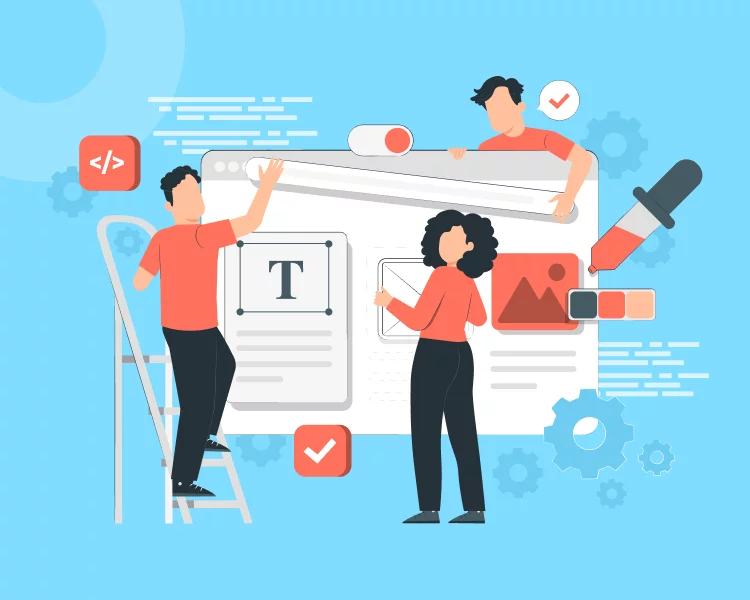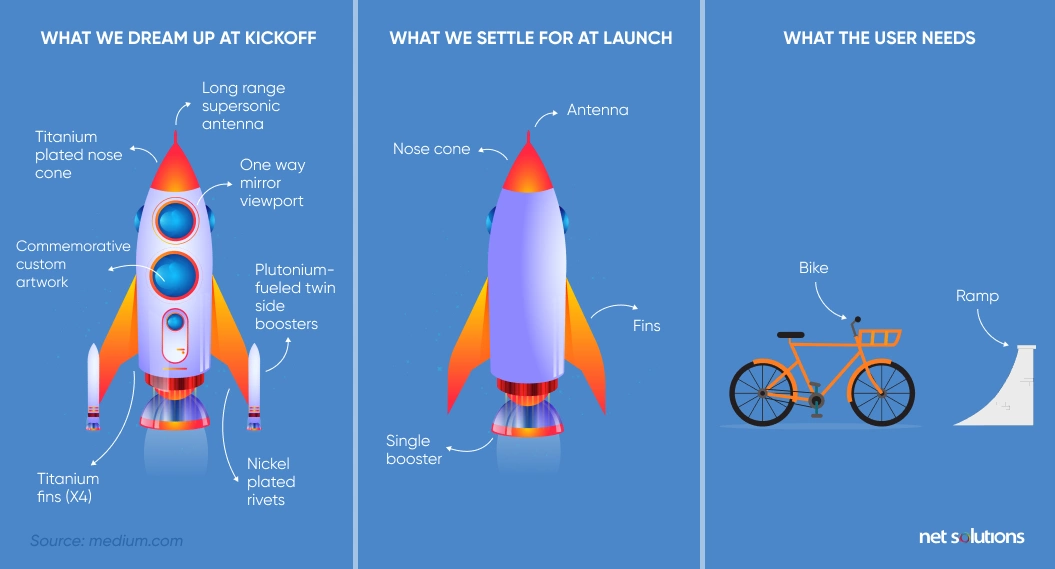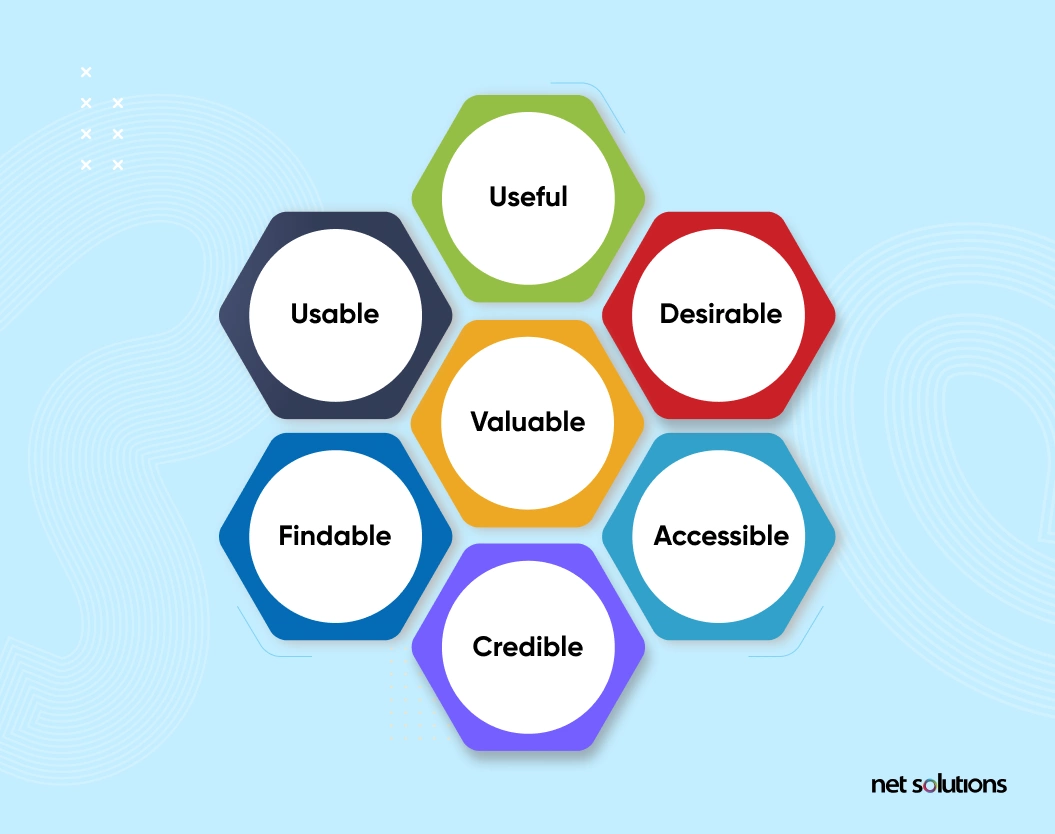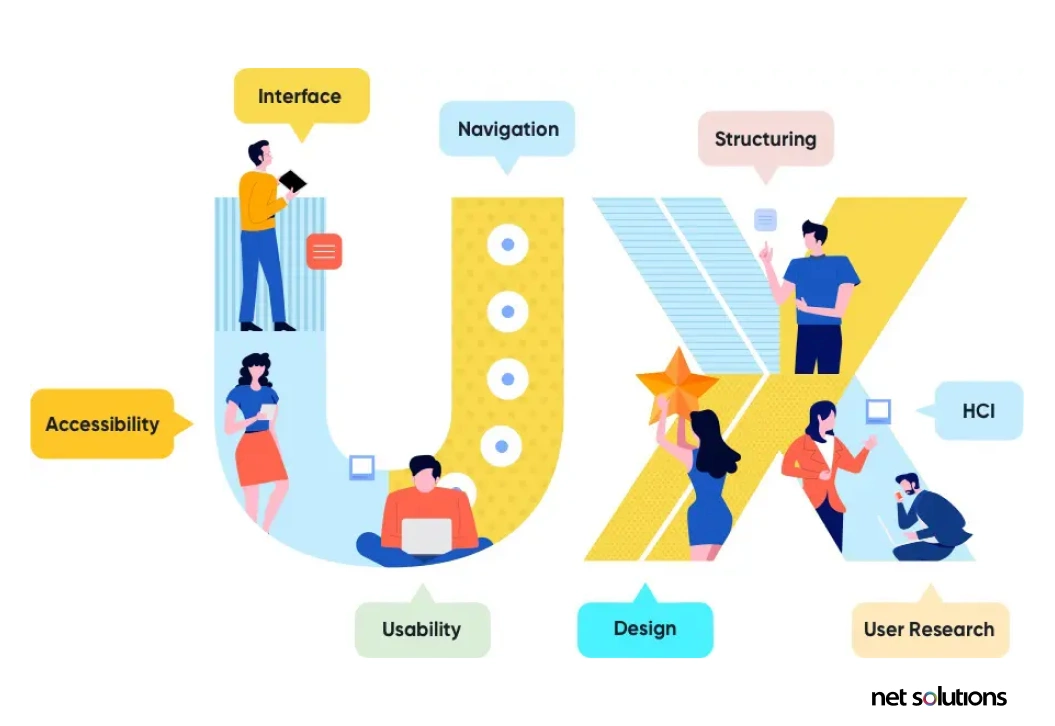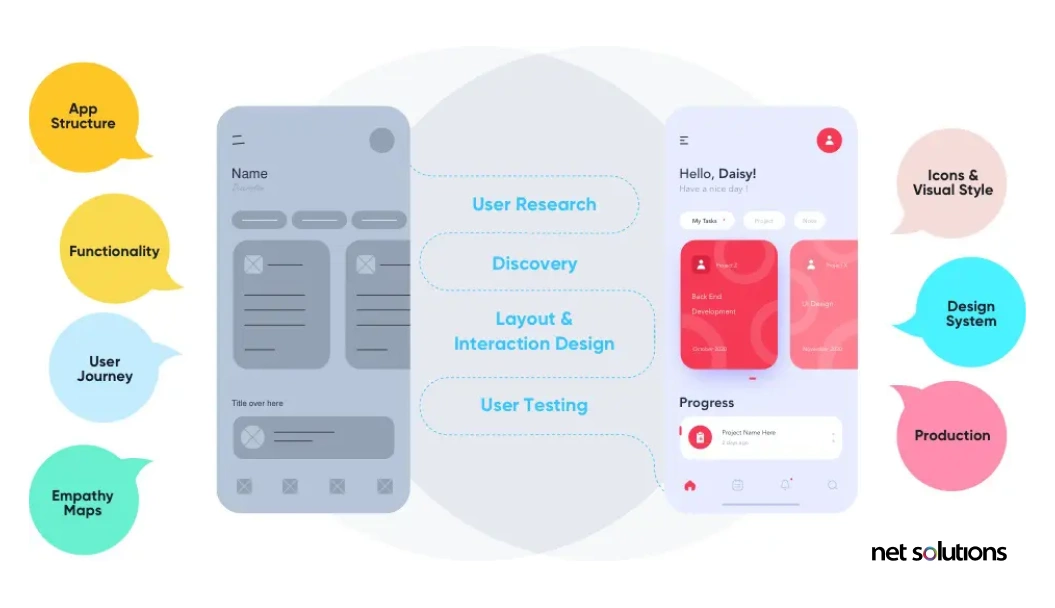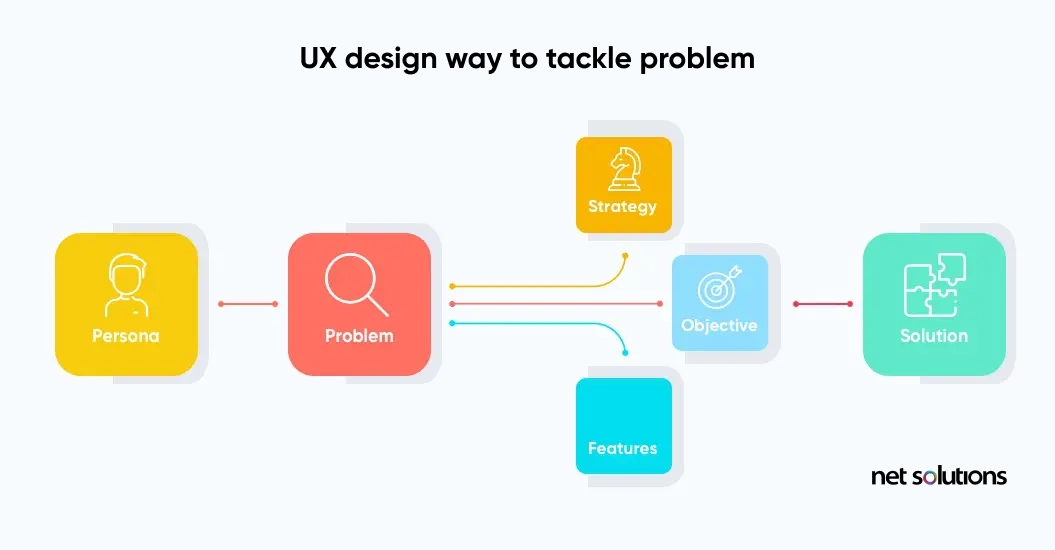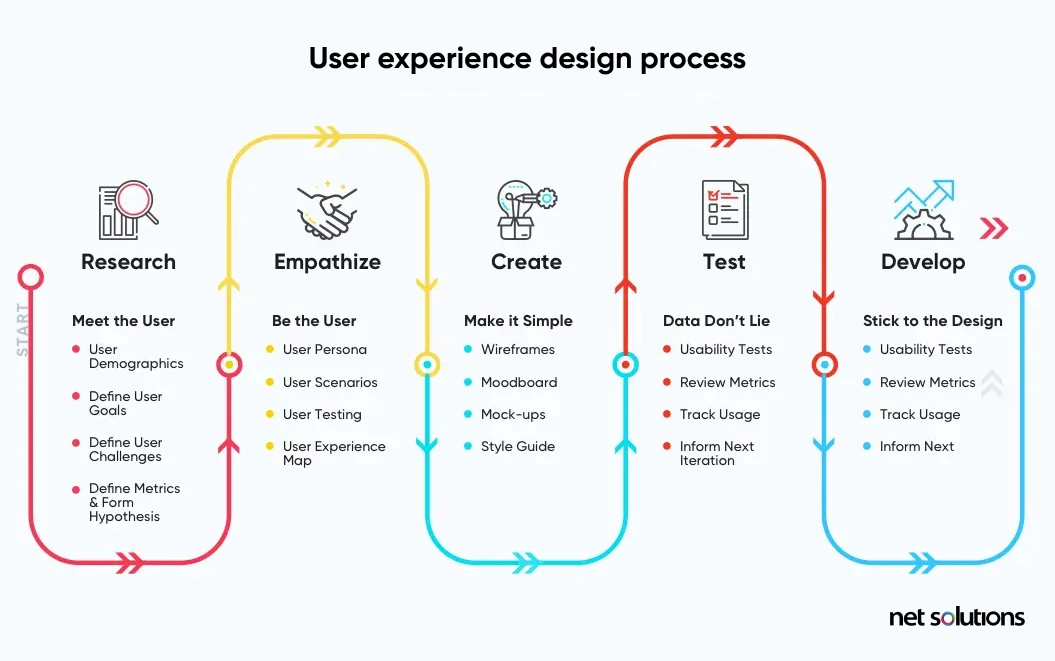Summary: Human attention span has dropped down to a mere 8 seconds. In a highly competitive market, you must ensure your product is worth your user’s attention. How do you achieve that? Start by curating a smooth user experience.
How would you react if you had to push doors that are meant to be pulled and pull doors that should be pushed, and walk into doors that neither pull nor push but slide? Unnecessary problem.
The design of the door should indicate how it works without any hit and trial – and that’s what designers are trained to do.
Two essential characteristics of good design are discoverability and understanding.
- Discoverability: Is it even possible to determine which acts are possible, where they can be carried out, and how to do so?
- Understanding: What’s the overall meaning? How should the product be utilized? What do the various settings and controls mean?
Good designers begin by attempting to understand the genuine difficulties rather than trying to fix the problem presented to them. As a result, instead of converging on a solution, they diverge, researching people and their goals to provide concept after idea after idea.
It takes skill to be able to use data and qualitative feedback to highlight the significance of user experience issues and to use this information to craft a compelling argument that persuades stakeholders.
And like any art, it is hard.
Look at this comic; for instance, what you ‘think’ your users want is completely different from what ‘actually’ works for them.
User Experience, or UX, encompasses all the customer interactions with the company and its products. UX is one of the essential parts of creating an app or website, and it’s also an area often overlooked or handed off to a junior, an intern, or a graphic designer.
Let’s look at why we should prioritize user experience:
- Potential customers form opinions of your website design in less than 17 microseconds.
- 88% of customers wouldn’t return to a website after having a bad user experience.
- 76% of customers will switch to a competitor after just one bad experience with a brand they like.
- 52% of users say a bad mobile experience makes them less likely to engage with a company.
- Cart abandonment is associated with user experience, including 25% with shipping fees that are not upfront and 28% due to complicated checkout processes.
- The cost of fixing an error during implementation is 6.5x higher than fixing it during design.
UX is more than “design” — understanding your customers and how they interact with your product, application, or website. By understanding what your customers want and need on an ongoing basis (consumer behavior is not static), you can adapt to fill the brand experience gap — the space between what your brand promises and the reality of what your consumers experience.
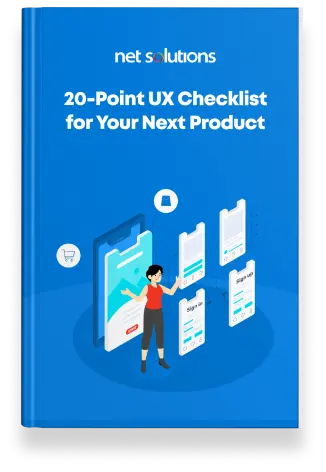
We respect your privacy. Your information is safe.
What Is User Experience (UX) Design?
User experience design is about understanding customers’ feelings when interacting with a website, app, or product. A good UX design is functional, desirable, accessible, credible, findable, usable, and valuable.
User experience does not depend only on how the product is designed. There are other aspects as well that make UX design more challenging. This includes the user and the situation where they use the product.
UX designer Peter Morville expresses these critical tenets as a user experience honeycomb:
Although all seven hexagons are essential, we’re going to touch on three of them:
Usability
The usability of a UX design refers to how easy it is for a user to interact with your app, product, or website. When we talk about improving ease of use, we’re concerned with the following questions:
- How easy is the user’s first interaction?
- Are the functions and interactions efficient (accomplished quickly)?
- If users hit stumbling blocks or errors, are they deterred?
- Does the interaction “delight”?
A web usability study found that 46% of users will leave a website that lacks a compelling message about what the company does, and 37% will leave due to poor design or navigation.
Accessibility
While usability concerns whether a particular design is practical and satisfying for the user, UX accessibility asks if the same experience is universal to all users. Accessibility looks at equality of experience for users who may use assistive devices or have other disabilities. Web UX designers will consider colors and contrast, focus indicators, labeling practices, tags for screen readers, etc.
Usefulness
Usefulness is often considered usability (ease of use) and utility (provides the right features). Effectiveness can be determined by answering the following question: is this something you want or need? This level of value is often considered a cornerstone in UX design.
UX vs. UI: The differences
What is the difference between user experience (UX) and user interface (UI)? After all, aren’t they both about the user? This is a common question because the terms are often used interchangeably.
UI, often known as interface design, is about the look of a website or product: the design, colors, placements, and fonts. The main goal of a good UI is typically to create an aesthetically pleasing interface.
On the other hand, UX is about function (how the site works) and experience. To create and maintain a good UX, the question always remains open: what does the user want and need?
Rather than thinking of UX and UI as opposing forces, it is good to see the intersection. Sometimes, a designer can hold either or both roles, but UX often includes more significant contributions from business analysts and QA professionals.
Why Is UX Design So Difficult?
Understanding users’ expectations, needs, desires, and paths of action is at the core of UX. Every user is different, and you need to identify every day or high-return needs and stumbling blocks and prioritize them based on importance (metrics are helpful!). Smart user experience design starts by distinguishing the problem and managing ideas to tackle it:
UX designers must create consistent, intuitive systems that nudge users to achieve their goals with as little friction as possible. It may sound easy, yet it’s anything but that.
Let’s look at the UX design skill set and UX design process to understand why UX design is so complex.
Companies prioritize design because of seismic shifts in the dynamics of value, experiences, and power that make user experience (UX) matter more than ever. But many firms undermine their efforts because of their design immaturity, misperceptions, and talent shortages.– Forrester
Assuming that anyone can create good UX design is like saying someone would be a good cook because they like food. The UX design process requires many specialized talents:
- Business/user analysis (which requires both a business and psychology background)
- Information architecture
- Wireframing
- Prototyping
- Design
- Soft skills: empathy, communication, collaboration
- Industry-specific knowledge
Designing UX requires study, practice, and understanding. Good UX designers never stop learning. They don’t just create what they want; they learn to understand the needs of a broader pool of users. Identifying and convincing others of those needs are essential skills in UX design, given that the role is truly about more than just design.
“As a designer, it is part of your role to persuade, convince, and tell a convincing story that helps the rest of the team understand the customer’s pain with your product and why it is so important to fix.” – Alastair Simpson
The Principles of Effective UX Design
No matter what UX design trends industry leaders are following, the fundamental principles of effective UX design are as follows.
Identify the user’s needs
The first goal of user research (UX research) is to understand the user and their needs. Who are your target users? What are their user personas? What do you think your users want, and what data do you have?
See how they respond to/interact with similar apps
Now that you have a hypothesis about what your users want, you need to put yourself in their shoes. Look to the marketplace and identify how your user personas interact with similar apps or websites. These kinds of profiles are known as user journeys.
Identify problem areas and missing features/options
Now that you have an idea of your user and their needs, it’s time to develop your vision of meeting them. This is your creation stage, and it’s time to start creating, whether it’s through wireframes, mood boards, prototypes, or A/B test mock-ups.
Make improvements
We begin an iterative testing process with your users, either in a test group or with live A/B tests. Ideally, testing is done early in the design process, allowing you to test features or designs and incorporate feedback at regular intervals.
According to research, it only takes five users to find 85% of user experience problems during the testing phase.
Test and repeat
Prototyping lends itself to innovation while saving money in the long run. Every feedback you get can be integrated and re-tested, and this process repeats until you develop a cohesive final design that delights and drives performance.
Good design doesn’t just happen — it’s prototyped. If all of this sounds like Agile, you’d be right. Getting UX design right requires a customer-centric approach: understanding, iterating designs, testing, and adapting.
Try to keep some consistency with common apps
Innovation is essential, but not for the sake of innovation alone. One of the core hexagons in UX design is usability, which comes from familiarity. When customers open up a shopping app, they have expectations around functionality: how to search, the names of navigation menus, and the process of adding items to carts and checking out. Innovation in common apps such as this hold the potential to introduce friction instead of delight.
UX Designs that Perform & Delight
In this post, we discussed the risks of not paying attention to UX in your product, application, or website design. Now let’s take a look at the potential returns from investing in UX:
- Every $1 invested in UX brings in $100 in return – an ROI of 9,900%
- 41% of organizations have increased sales with personalized UX
- Better UX design can yield conversion rates up to 400%
Human-centered user experience design is the magic bullet to create an irresistible, inevitable interaction. At Net Solutions, we ensure your UX is your X-factor, helping you with every step of your user experience design journey.
How to create user-centric mobile applications/products?
Offering value to your users is the key to success, and not about having a mobile website or app. You must concentrate on results rather than wasting time on pointless ideas by approaching mobile design from a user- and task-centered perspective.
‘Human-centered design is human-centered design.’
There are numerous human-centered design models. Each model is built around an iterative approach that puts the needs of the people first. Here, we’ve seen a design approach specifically adapted for mobile devices. We start by comprehending the needs of both our users and the company’s requirements. Following the definition of the value proposition and the development of a UX strategy to differentiate it, we sketch our solutions and iterate them.
“When you design, you have to understand what the capabilities are of the people you’re designing for.”— Don Norman
Here’s a quick overview:
- Assess
- Understand
- Define
- Differentiate
- Sketch
You can understand your users’ demands, create your value proposition, and capitalize on their emotional value in a way that helps you stand out if you delve into their contextual experience, what surrounds it, and what they do as they go about their days and lives.
Role of a UX designer
“How do I explain what I do at a party? The short version is that I say I humanize technology.”
— Fred Beecher, Director of UX, The Nerdery
As members of a larger product team, UX designers frequently find themselves bridging the gap between users, the development team, and important business stakeholders. The user experience (UX) designer must consider the user’s needs and overall experience while creating new features, altering current features, or developing new products.
Despite the versatility the position offers, a UX designer might be expected to carry out the following general duties:
- Carrying out user research
- Creating user personas
- Identifying a digital product’s information architecture
- Creating wireframes and user flows
- Making prototypes
- Carrying out user testing
It is crucial to know that UX designers are generally not responsible for a product’s visual design. Instead, they concentrate on the user’s journey and how the product is designed to support it. Look for a user experience design agency that offers the right digital experiences when starting your project. It’ll work wonders for your business.
Frequently Asked Questions
-
01
What is the UX lifecycle?
The UX design process, also known as the UX lifecycle, is an iterative process where steps can be repeated as necessary to generate an appropriate and appealing outcome.
-
02
Graphic design vs. UX design: What’s the difference?
The scope is one of the main distinctions between graphic and UX design. Graphic designers emphasize the visual components. UX designers focus on the interaction between a user and a product, which broadens their viewpoint. Graphic design is frequently only a small portion of the overall user experience.
-
03
Does UX need a lot of coding?
No.
Coding is not necessary for UX design. However, there are times when knowing how to code can give you an advantage over the competition. -
04
What are the primary phases in the ux design process of a mobile app?
- UX research and competitive analysis
- architecture design and wireframing
- mockups and prototypes
- testing
- rollout


 Updated: December 2, 2022
Updated: December 2, 2022
